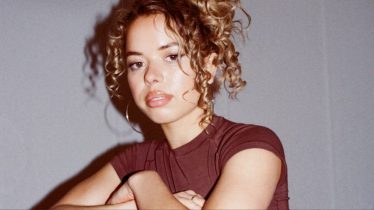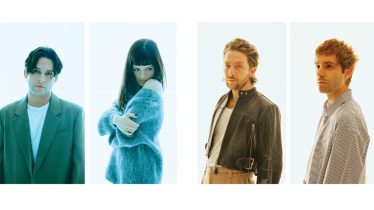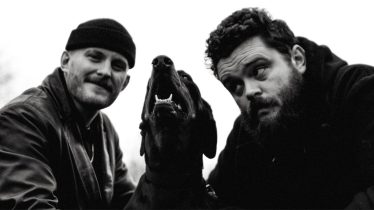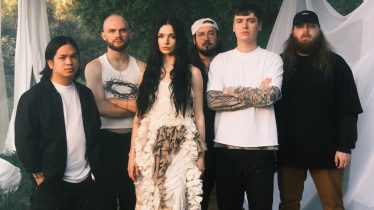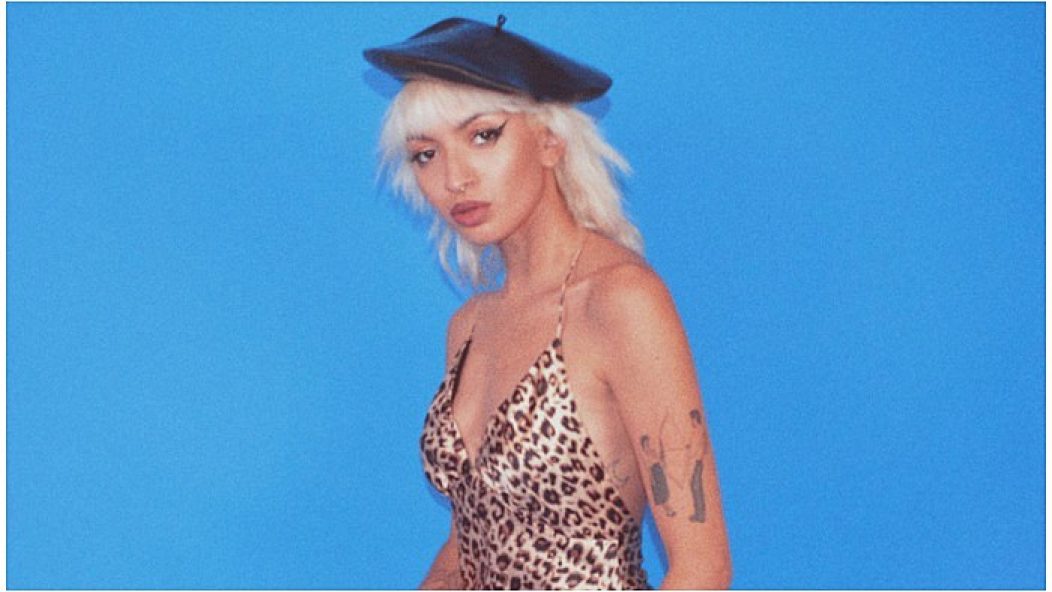
Tatiana Hazel shares how creating music and fashion go hand in hand
Tatiana Hazel got into music early. As a teenager, she began posting original compositions on YouTube, as many other young hopefuls did. Now, as a 20-something creative with an arsenal of original songs to her name, she’s evolved her resume to include a handful of singles and two EPs, including 2020’s DUALITY.
The concept of duality itself is a recurring theme within Hazel’s work and life. As a bilingual artist, she sings in English and Spanish, which is a callback to her childhood and speaking Spanish at home.
Despite her solo efforts, she also recently formed the band PROM with two of her friends, which forces her to approach the creative process from different angles in a collaborative setting versus by herself. A native Chicagoan, Hazel made the move to Los Angeles a year-and-a-half ago before the COVID-19 pandemic, and both cities have influenced her as an artist in different ways.
Read more: Lucy Dacus knows compassion is the best way to acknowledge the past
Hazel toes the creative line between music and fashion, crediting her desire to style herself for her music videos as the reason she started experimenting with the latter in the first place. That interest paid off, as the outfits featured in her videos perfectly complement the DIY feel of the music.
She also likes to think that her songs have a dual meaning: one that calls back to her experiences and how the song relates to her and one that fans create for themselves when listening. Hazel makes music with the intent of using it as an outlet for self-expression while also giving listeners the ability to apply their own experiences and meanings and come out feeling connected to her work on a personal level.
Your music has been labeled many different things: pop, R&B, indie, DIY and more. But also a big part of your artistic identity is pushing away from fitting in any one box or category. What do you want to say when people try to label you in a certain way?
I don’t really identify with a certain genre. When people ask, “What kind of music do you make?,” alternative pop is what I say because it’s not straight radio stuff but also not fully alternative either. It’s a little more catchy. It’s really hard for me to even label myself, so when other people try to, I feel like it’s inevitable because people are always trying to put a name to something or define something. But I feel like the more music I put out, the more it will speak for itself.
How does singing in two different languages influence your identity as an artist?
I definitely want to do more of it in the future because my past project hasn’t had any of it, but that was the stuff that first got my music recognized. I never used to sing in Spanish, but I always grew up speaking it with my family in our household, I just never connected it to music because I grew up in Chicago. Once I started combining Spanish with the stuff I was already doing, it was really cool because a lot of people relate to that because they’re like, “I also have that duality and fit into both worlds and don’t fit into both worlds at the same time.”
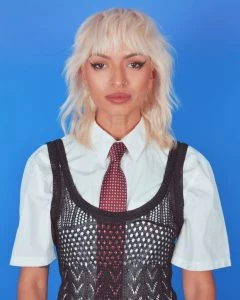
Every artist creates a different experience for listeners through their sound. How do you want people to feel when they listen to your music? What overall message are you hoping to get across?
I just want people to relate because I write super honestly about things that happen to me. Obviously, there are only so many experiences to be had that I know other people have been through. So when people are listening to my song, they’re not going to know what I wrote it about. They’re going to connect it to whatever’s going on in their lives. It’s not always one message. There’s this person out there that relates to what you’re going through. There are a bunch of people that also relate, and you’re not alone in these things. We are all just figuring it out, and now there are songs about it.
You’re a Chicago native but moved to L.A. right before the pandemic started, and you touch on that experience of moving and leaving part of your life behind in “Hasta Que.” Now that you have lived in L.A. for a while, have you seen the city and its cultural effect on your work as a designer and musician?
I am super inspired and impacted creatively just by traveling in general, so any time I would visit a place for a couple of weeks, it would change my perspective. So definitely moving and just being surrounded by different things every day and meeting new people who listen to different kinds of music, I know that it’s had a huge influence just based on the things I’m writing about and the things I see every day.
How did you get into fashion, and how does being a designer go hand in hand with making music?
It goes along super well, and it’s also been a really great way for me to connect with other artists. I don’t collaborate a lot when it comes to music because I produce and write myself. I would dress other artists for their tours, and that got me connected to a community of musicians that I wouldn’t have met when I’m just in my own world. So it opens up my creative circle. And also when it comes to designing my own stuff, it gives me full creative control of building my own world and my own visuals, which is an important part of music.
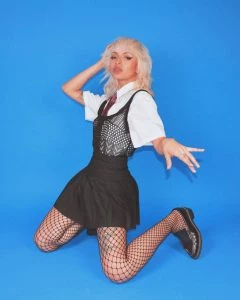
You also recently formed the band PROM with two of your friends. What are some of the differences between releasing music by yourself versus with a band, and do you have to change your creative process when collaborating with them?
It’s been interesting because at first, it was like the same process because they’re in Chicago, and I’m obviously here, and we started during the pandemic. A lot of our work was through emails. Our whole first EP was done separately. That felt really similar to my music and my own process because I was just in a room working on it by myself.
But we just recently started working on our next project and getting in a room together. It was so different because I was always just asking for feedback on stuff. It was really cool because I would play stuff out loud, and normally it’s just me in my head [going], “Is this bad? Is this good?” They would come in like, “That sounds cool,” and I’m like, “Yes!” So it’s really good to bounce ideas off people, and it’s a really cool process.
Growing up, you didn’t see many female producers doing what you now do. What was your mentality as you set out to teach yourself those skills and embrace that DIY creativity?
My initial mentality wasn’t super positive, like, “I’m going to be a producer, and this is possible.” It more so happened because I kept working with other producers, and no one was really understanding my vision, and I just got really frustrated and did it myself. But I was like, “I’ll do it myself until I find the right people.”
I never really saw other women producing, so I didn’t necessarily know if I was any good at it or that it’s something I could do where it is start to finish me, and I release it. But then some of the first songs that started streaming really well and I got discovered [by] were the ones that I produced 100% myself. So I was like, “Oh, I can do this.” Then I just started developing that skill. I definitely want to push more women to get into it because a lot of times, it’s just that mentality of you’re stopping yourself just thinking [if] you don’t see anyone else doing it, maybe you can’t. So I definitely want to change the mentality around that.
What would you consider the most important piece of advice for someone who aspires to be in your position as an artist?
I would say just persistence and patience [are important] and being passionate about it and not really caring about validation because sometimes it doesn’t come right away. You might not get the validation you want for something that you did a long time ago, but you’ll get it later. So just do it because you love it and keep doing it.
You can read the full interview with Tatiana Hazel in Alternative Press issue 395.
